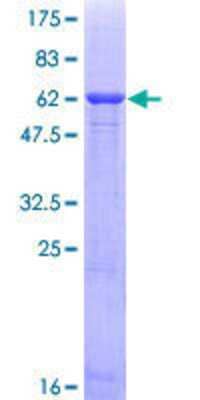GBL: Proteins and Enzymes
G-protein beta-subunit-like (GBL), also known as MTOR Associated Protein, LST8 Homolog (mLST8), is a 326 amino acid (aa) protein that is comprised of seven WD40 repeats and has a predicted molecular weight of approximately 36 kDa. The human protein shares 97% aa sequence identity with the mouse and rat orthologs. GBL binds the kinase domain of TOR and has been shown to stimulate its activity. GBL is found in both complexes formed by TOR, TORC1 and TORC2. It is required for TORC1-dependent phosphorylation of p70 S6 Kinase and IRS1 following stimulation with serum and insulin, and TORC2-dependent phosphorylation of Akt on Ser473 in response to serum, Insulin, and IFN-beta. GBL also negatively regulates TNF-alpha-induced NFkB activation via binding to IKK alpha and IKK beta. The physiological importance of GBL is highlighted by the fact that knockout mice display embryonic lethality, possibly due to defective vascular development. Additionally, female mice harboring heterozygous null mutations for both TOR and GBL have an increased life span, suggesting that GBL may also be involved in the aging process.
1 result for "GBL Proteins and Enzymes" in Products
1 result for "GBL Proteins and Enzymes" in Products
GBL: Proteins and Enzymes
G-protein beta-subunit-like (GBL), also known as MTOR Associated Protein, LST8 Homolog (mLST8), is a 326 amino acid (aa) protein that is comprised of seven WD40 repeats and has a predicted molecular weight of approximately 36 kDa. The human protein shares 97% aa sequence identity with the mouse and rat orthologs. GBL binds the kinase domain of TOR and has been shown to stimulate its activity. GBL is found in both complexes formed by TOR, TORC1 and TORC2. It is required for TORC1-dependent phosphorylation of p70 S6 Kinase and IRS1 following stimulation with serum and insulin, and TORC2-dependent phosphorylation of Akt on Ser473 in response to serum, Insulin, and IFN-beta. GBL also negatively regulates TNF-alpha-induced NFkB activation via binding to IKK alpha and IKK beta. The physiological importance of GBL is highlighted by the fact that knockout mice display embryonic lethality, possibly due to defective vascular development. Additionally, female mice harboring heterozygous null mutations for both TOR and GBL have an increased life span, suggesting that GBL may also be involved in the aging process.
| Applications: | WB, ELISA, MA, AP |

